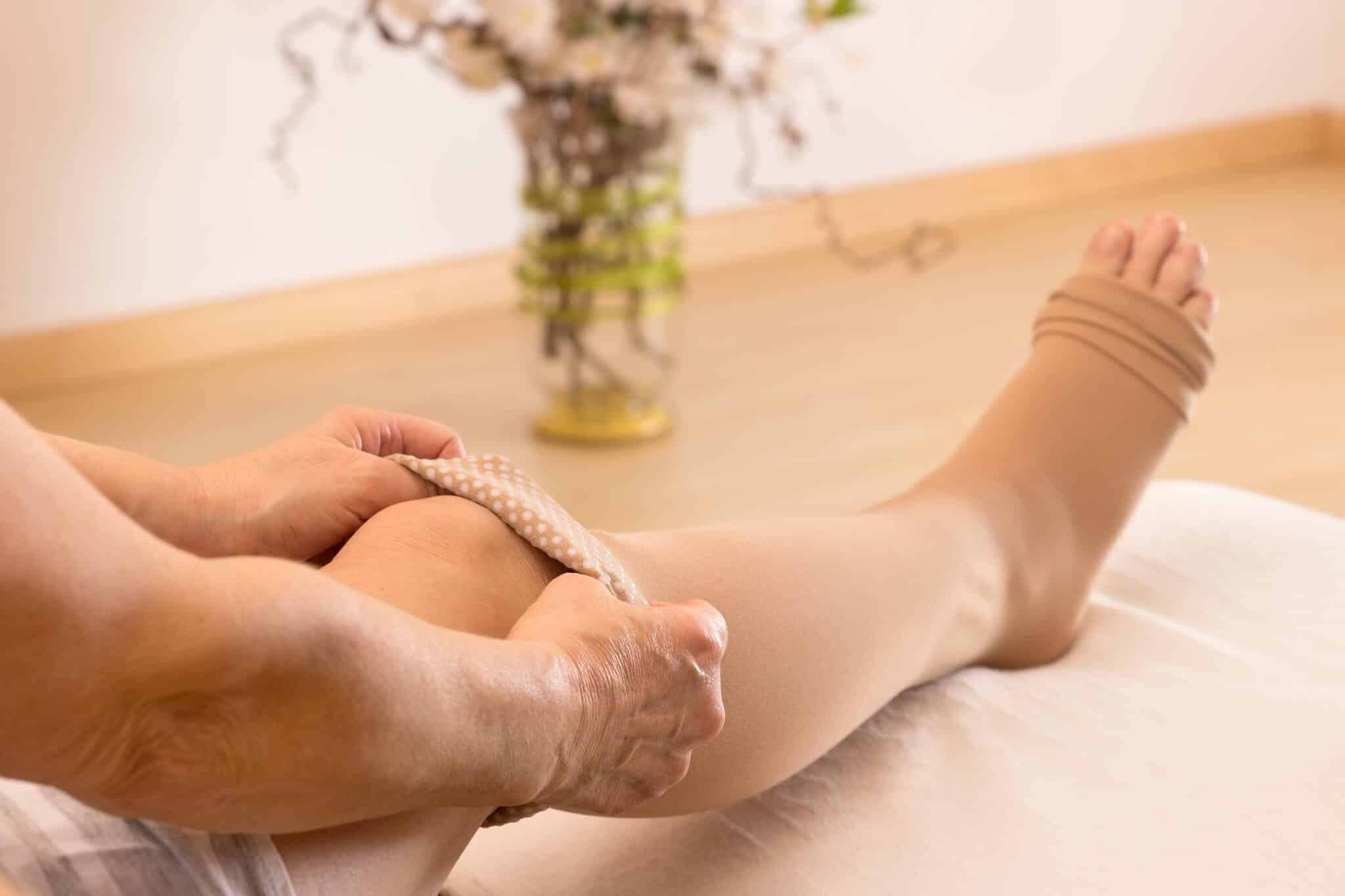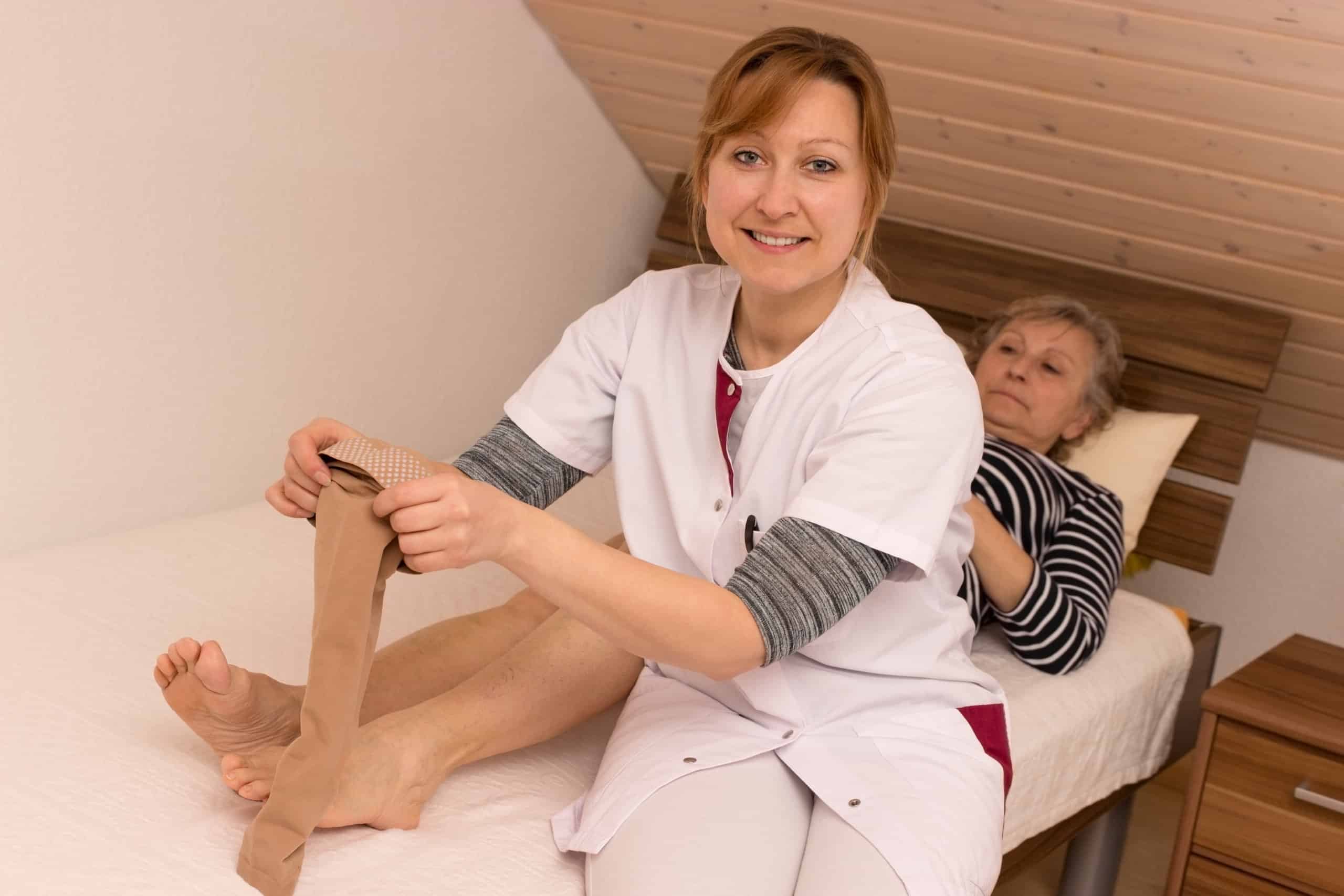How Compression Stockings Work
In recent years, compression clothing has become the new buzzword in the world of sports medicine. Compression wear can take many forms including compression socks, compression stockings or compression shorts. In general, compression apparel is wearable gear specifically developed to help manage injuries such as muscle, ligament and tendon damage. Compression stockings and socks belong to a category of compression wear designed to treat blood circulation related conditions like deep vein thrombosis.
We examine below how compression stockings work to treat problems related to poor blood circulation as well as conditions related to other injuries. Compression socks provide the same benefits as stockings in relation to the management of blood circulation problems.
Improved Blood Circulation
Any discussion of how compression stockings work has to begin with the impact on blood circulation. Compression clothing acts like an express toll route in a busy city. It provides an expressway for important elements for healing to reach the injury faster and be more effective once they get there. As described in our post on the science of kinesiology taping, the speed with which blood and other lymphatic fluids can flow through the site of an injury is an important factor in speeding up healing from the injury.
Artery walls dilate in response to optimal compression, increasing blood flow. As blood carries oxygen and other nutrients throughout the body, this will in turn result in a more rapid supply of these nutrients to cells throughout the body.
In contrast to arteries, vein walls will constrict under compression, also accelerating blood flow through the body. This more rapid blood flow results in both lactic acid and blood that has been depleted of oxygen blood returning more quickly to the heart where oxygen levels are replenished.
The American College of Chest Physicians (ACCP) has recommended the use of compression stockings for those at risk of developing Deep Vein Thrombosis (DVT). DVT is a condition characterized by the formation of blood clots within a deep vein, typically in the leg. A 2016 Cochrane study has also concluded that there is high quality evidence that the use of graduated compression stockings can reduce the incidence of symptomless DVT among long range airline passengers.
Reduced Muscle Vibration
Compression socks and stockings also serve to stabilize muscles and decrease their vibrations. In so doing, they reduce the risk of muscle damage from overstretching or tearing during athletic training or competition. As tendons are structures that connect muscles to adjacent bones, this also reduces the risk of injury from tendon damage.This is an important aspect of how compression stockings work that is often forgotten.
Less swelling
While inflammation and swelling have a hand in the healing process, they are uncomfortable. Additionally, if prolonged, they can actually inhibit recovery by preventing movement and the buildup of muscle strength. Compression stockings or socks help to reduce swelling and can give an injured athlete the ability to recover sooner.
Less edema
Normal swelling is bad enough, but a buildup of excess fluid, called edema, can also slow down the healing process by inhibiting movement. Edema usually occurs around joints. Compression socks or stockings can aid in reducing this excess fluid and stopping the painful, limiting effects. This is especially the case when the patient combines their use with elevation of the injured area.
More nutrients
Everyone knows that nutrients are essential to a healthy body, but this is especially true when battling an injury. Compression helps stimulate the flow of lymphatic fluids that carry vital nutrients to the damaged tissues surrounding the injury. These fluids also remove waste from cells and body tissues. As mentioned earlier in connection with blood flow, this is key to how compression stockings work to facilitate the recovery process.
More oxygen
Oxygen, carried through the body by blood cells, is a crucial ingredient that helps injured tissue repair itself. Swelling, the body’s first reaction after an injury, restricts blood flow to the injured area and deprives it of oxygen. Compression socks and stockings open up the pathways and accelerate the delivery of oxygen to the injured area.





